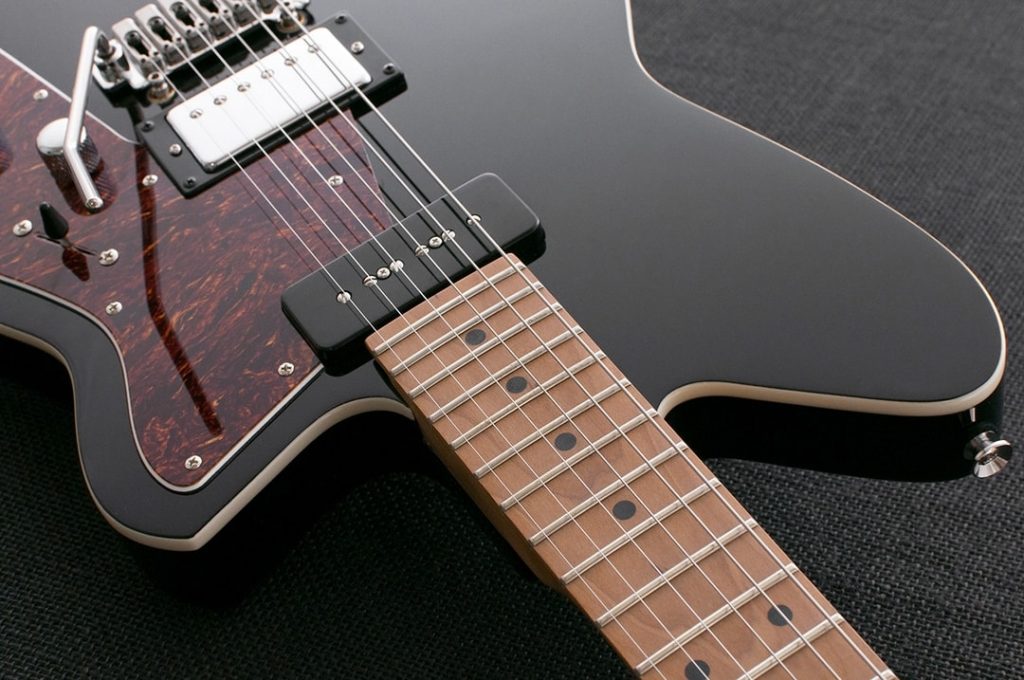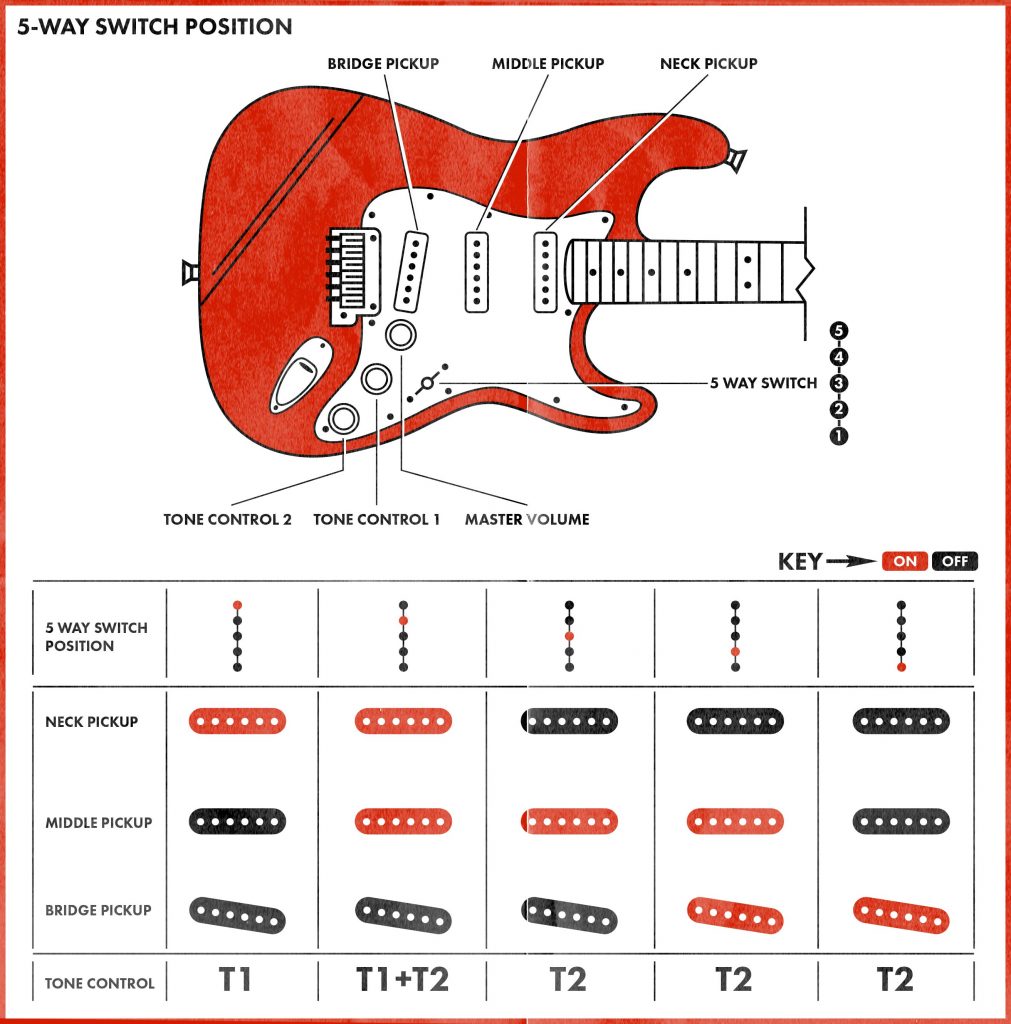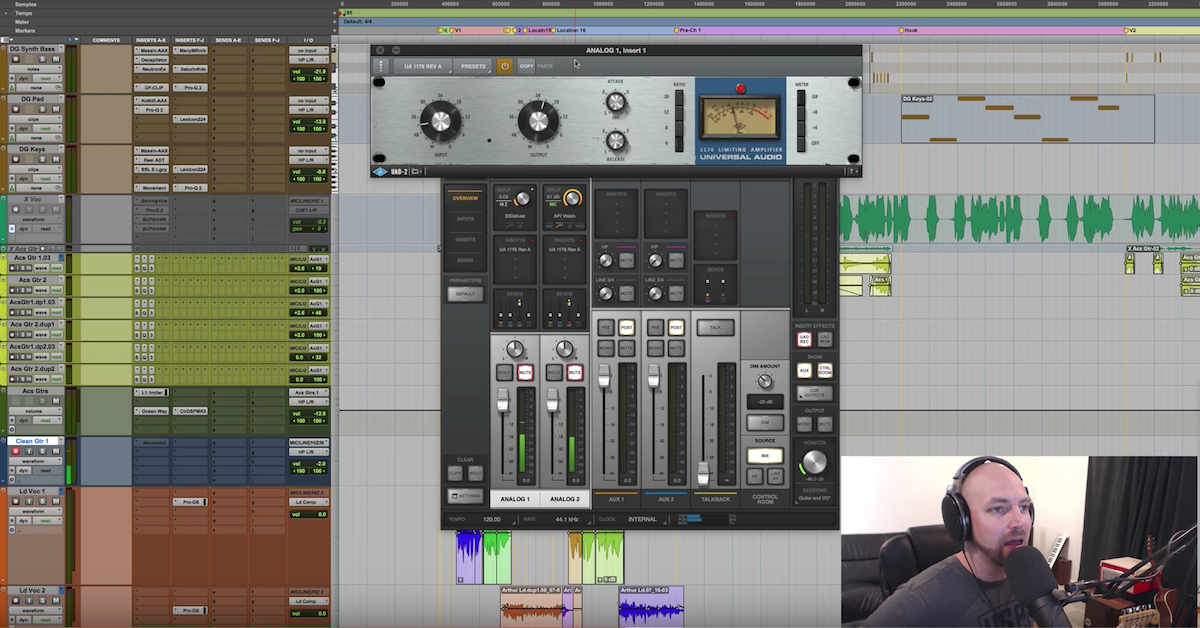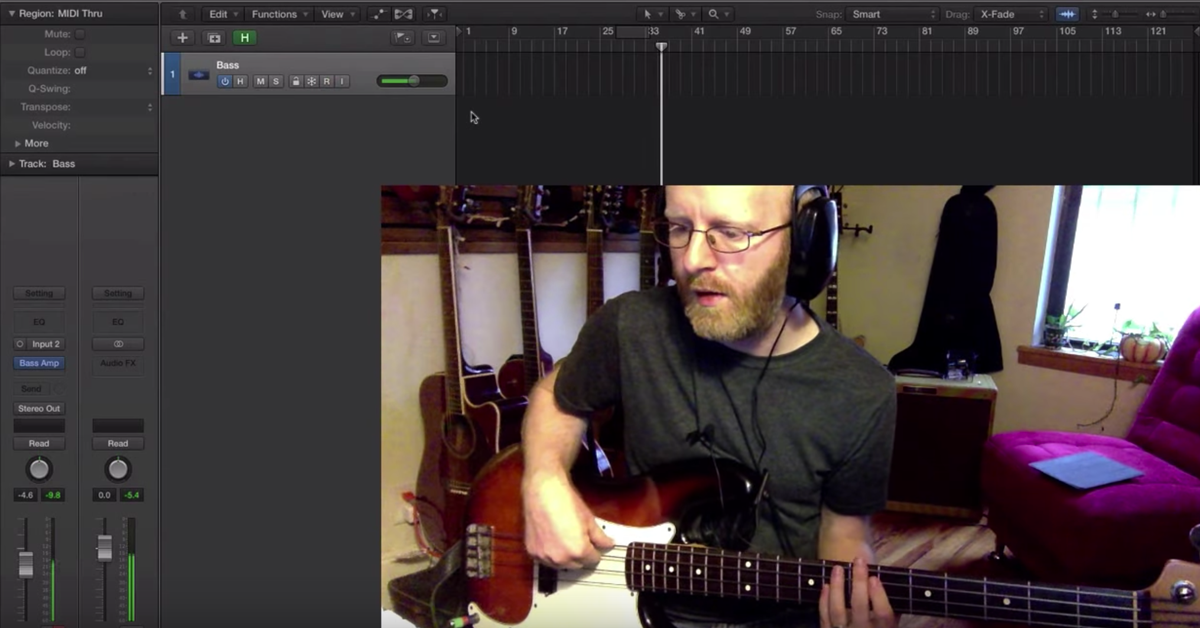Tips for Getting Unique Tones (and Having More Fun) When Recording Guitar
Article Content
It can be easy to forget how much fun it is to play an instrument when you spend most of your time producing and engineering music for others. I’ve been fortunate to have stayed very busy during the past year, considering the pandemic and all, but I still found myself with a bit more free time. With the time, I’ve been able to reconnect with a pastime that has been important to me since adolescence: sitting in a room alone and playing the electric guitar. Not meticulously recording, not intentionally writing, not doing anything in particular except noodling around on my favorite instrument.
You may hear the adage “tone is in the fingers” when speaking of guitars, and I am a believer. So much of the emotion and character in music is dependent on how a part is written and performed. While I love the sonic possibilities created by using unique gear and recording techniques, it all starts with the connection to the instrument itself. That said, in this article, I want to offer some tips on how to get creative when recording and mixing electric guitars. But before we do that, let’s cover some basics about the instrument.
Pickups
Needing a way to amplify his acoustic instrument to be audible when playing alongside a band, George Beauchamp invented the electric guitar about a century ago. The history and evolution of the instrument is a fascinating one. To keep it concise and simple, what makes an electric guitar electric are pickups, which convert the mechanical energy of the guitar strings into electrical signals. Pickups are strategically placed between the neck and bridge of an electric guitar to capture certain tonal qualities of the instrument. Pickups closer to the neck have a fuller, warmer sound, whereas ones located closer to the bridge have a brighter, more biting tone to them. The most common types of pickups found in modern electric guitars are single coils, humbuckers, and P-90s (which technically only feature one coil, but are different in sound and nature to traditional single coil pickups).
A single coil pickup was used in Beauchamp’s early guitar design and were incorporated into commercially available instruments by Beauchamp’s associate Adolph Rickenbacker. Gibson and Fender followed suit and incorporated this pickup design into their early instruments. Gibson also began using P-90 pickups in guitars in 1946. P-90s differ from traditional single coils in that the coil is wound around a wider, shorter bobbin. They produce a warmer, fatter tone than other single coils. While humbucking technology had been around previously, the humbucker pickup wasn’t popularized until Gibson used them in several models in the 1950s. As their name implies, these pickups were designed to remove unwanted hum introduced by the single coil design. Humbuckers feature two coils, with one of the coils out of phase in such a way that only the undesirable hum is diminished. A Gibson Les Paul is an example of a popular guitar that features humbucking pickups, and is renowned for its warm, thick, full tone.
I own guitars that feature all three of these pickup types. When writing and tracking, I consider the different qualities that pickups impart onto performances and recordings. Let’s review how I typically decide how and when to use them in productions.
A friend of mine recommended that I look into the Reverend Guitar Company, and I am so very grateful that I did. I recently purchased a Double Agent W, and I find myself not being able to put it down. The factory setup is flawless, the intonation is stunning and the neck is a dream. The Double Agent is named so because it features two different types of pickups — a humbucker in the bridge position and a P-90 in the neck. The humbucker shines when used in overdriven, high gain situations, and the P-90 is fantastic for clean or semi-distorted applications. As someone who appreciates when companies offer products that are of high quality and great value, I can’t strongly enough recommend Reverend Guitars. It’s not easy being a left-handed guitar player, but I’m grateful that a company such as Reverend offers such high-quality instruments at incredible prices.

Here are some examples of me playing my Reverend Double Agent W, performing the same musical passages, but using the different pickup positions:
Bridge pickup, clean sound
Middle pickup, clean sound
Neck pickup, clean sound
Bridge pickup, dirty sound
Middle pickup, dirty sound
Neck pickup, dirty sound
My Fender Stratocaster is outfitted with 3 single coil pickups — one in the bridge, middle and neck. This allows for 5-way position switching. So there are 2 positions that use a combination of the middle pickup along with the bridge or neck.
To be honest, when I am writing on the electric guitar, which pickup to use is something I give a fair amount of consideration to. Each of these positions respond a bit differently depending on where you are playing up and down the neck and, of course, if you are playing clean or overdriven.
Position 1: bridge pickup only. This is the most bright and cutting out of the 5 positions. For crunchy, overdriven rock power chords, and blistering, trebly leads, this is the pickup I generally use. You can achieve a clean ‘country twang’ with this pickup, though you might prefer a Fender Telecaster for that application.
Position 2: bridge and middle pickups together. Truthfully, the sound of this position alone is why I wanted a Stratocaster. For super clean, choppy, disco/funk rhythm parts, this is the sound.
Position 3: middle pickup only. The sound of this position is fuller than the two aforementioned positions, but it’s still bright, and has what you might hear referred to as a ‘glassy’ quality.
Position 4. middle and neck pickups together. This is a slightly less bright version of position 2 and, again, is great for clean rhythm parts.
Position 5: neck pickup only. There is some lovely warmth and unique midrange to the single coil neck pickup on a Strat. It’s great for bluesy leads, and has a clear, defined sound — you can hear each of the notes clearly when strumming a chord.

Here are some examples of me playing my Fender Stratocaster, performing the same musical passages, but using the different pickup positions:
Position 1, clean sound
Position 2, clean sound
Position 3, clean sound
Position 4, clean sound
Position 5, clean sound
Position 1, dirty sound
Position 2, dirty sound
Position 3, dirty sound
Position 4, dirty sound
Position 5, dirty sound
Accessorize
I am a tinkerer. I get bored very easily, and I’m always looking for different ways to approach music creation. One of my favorite ways to obtain interesting guitar tones is playing the instrument in an atypical fashion. Anything that allows me to view the instrument from a different perspective is welcome. Here are a few accessories every guitar player should consider:
A Metal or Glass Slide
Plenty of famous guitarists embrace the slide: Bonnie Raitt, Jack White, Duane Allman and one of the most influential musicians of the 20th century, Robert Johnson. I greatly enjoy creating ambient drones by playing with a slide, and then drenching the guitar in reverb and/or delay. Slides are also a lot of fun when combined with a fuzz pedal (more on these later).
A Whammy Bar
Again, plenty of guitars are outfitted with a tremolo system, (the ‘W’ in my Double Agent W stands for the Wilkinson Tremolo system). So whammy bars aren’t exactly obscure, but they can be used in atypical ways. We lost a musical legend last year in Eddie Van Halen, who was a genius (and I dislike using this word, generally) at every facet of guitar playing. This included building and tweaking his own instruments and amplifiers. You can witness his brilliance and unbridled joy for the guitar in this video of him creatively using a whammy bar.
One of my favorite alternative rock bands from the 1990’s, The Toadies, combined getting their guitars to feedback with using the whammy bar aggressively, to make the feedback “sing.”
An EBow
The EBow is a powerful accessory, described as a “hand-held electronic bow for guitar.” It allows the player to transform the sound of their electric guitar to have infinite sustain (if you believe in the concept of infinity, that is).
Another trick/technique/something to not try at home unless you are very careful is playing the instrument using a power drill. I had come into this article prepared to blow people’s minds with this esoteric technique, only to realize when doing research that Eddie Van Halen employed it in 1991’s “Poundcake.”
In addition to manipulating the guitar with a variety of tactile accessories, an effective way to achieve unique tones is by playing the instrument creatively. There is a sound about two minutes into “Bohemian Rhapsody,” right after the line “sent shivers down my spine” which, upon opening up the multitrack, seems to consist of multiple layers of sounds including guitarist Brian May playing very close to the bridge (or perhaps the headstock) of the guitar. I would expect nothing less from May, one of my guitar idols, and one of the most creative guitarists of all time. While you can’t hear this particular sound in this video with the guitars isolated, it’s still worth studying, as it’s a masterclass in arrangement and achieving monstrous (but never abrasive) guitar tones.
Thurston Moore of Sonic Youth shares some more interesting approaches to modifying your guitar with accessories in this excellent video by Fender.
Pedal Power
Electric guitars are already a pretty versatile instrument but become infinitely more so when combined with the staggering variety of pedals available from both large and boutique manufacturers. Reverb, delay, phasing and fuzz are just a few of the many types of guitar effects accessible at the tap of the toe. I recently discovered Veri-Tone pedals, which are designed in Milan, Italy by an incredibly talented engineer who is arguably more enamored with The Beatles than I am. Two pedals I have been rocking from Veri-Tone are the Arcturus, which is a vintage-inspired preamp designed to emulate the EMI TG12345 console, and the Mr. Heath, which gets its namesake from a line in the George Harrison-penned “Taxman.” It goes without saying that both of these units are incredibly fun to plug an electric guitar into, but also work great for adding grit and vintage color to other sources such as synths, vocals and even drums when re-amping.
Pretty much every modern boutique pedal designer owes a debt of gratitude to ZVEX Effects, founded by Zachary Vex. Over the past two decades, Vex has designed some of the best sounding (and looking) pedals out there. The Super Hard-On gain boost is pretty much always somewhere between my guitar and amplifier. It covers a lot of sonic ground despite having only a singular knob, and introduces a drive that goes from subtle and transparent to bright and biting. When I’m feeling gnarly, I’ll plugin in my Fuzz Factory, which is far less subtle. The Fuzz Factory absolutely obliterates whatever you run through it, and is used by artists including The Deftones, The Black Keys, Trent Reznor and many more. Sometimes I’ll put down my guitar and twist its five knobs as it generates a howling feedback that can be played to somewhat resemble music, resulting in a sound like that of an unfriendly Theremin with rabies.
Pedals are an incredibly satisfying (but potentially expensive) rabbit hole for a guitarist to travel down. For anyone looking for a new hobby, DIY pedal builds are a fun way to customize your sound.
Microphone Theory
You can stick a $99 Shure SM57 directly in front of an amplifier and capture a great guitar tone, and many talented recording engineers have done just that. Similar to its performance when capturing snare drum, a 57 simply works. It’s not incredibly detailed or representative of the full frequency spectrum, but the sturdy dynamic mic captures just enough of what we love about the instrument/amp combination. Add a Royer 121 ribbon mic into the fold, and you’ve a combo so tried and true for this specific application that they make clips designed to handle both microphones at the same time.
While you can most likely get nice results with these widely-used microphones when recording guitar, I encourage experimentation in both microphone selection and placement. Here are a few of my favorite unorthodox recording techniques:
- Stick a large diaphragm condenser aimed at a wall to capture the sound of the amplifier reflecting off the room’s surface.
- Place a mic of any type in a closet (if available) to capture a thick, muffled sound that you can then pepper in as a special effect during mixdown.
- Take a plastic cup, cut a hole in the bottom, and stick an SM57 through it. I place the mic/contraption right in front of the amp, and the resonant frequency of the plastic cup is captured along with the sound of the amp itself. The sound isn’t good, but that’s not the point.
- Use a small or large diaphragm condenser aimed at the neck/body as you would an acoustic guitar, and blend in the signal along with the amplified recording to taste.
I hope this article inspires you to experiment with some lesser-known techniques when playing and tracking electric guitars. They may not leave you with results suitable for final mixdown, but at the very least they are tons of fun to try.





